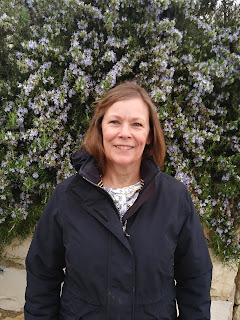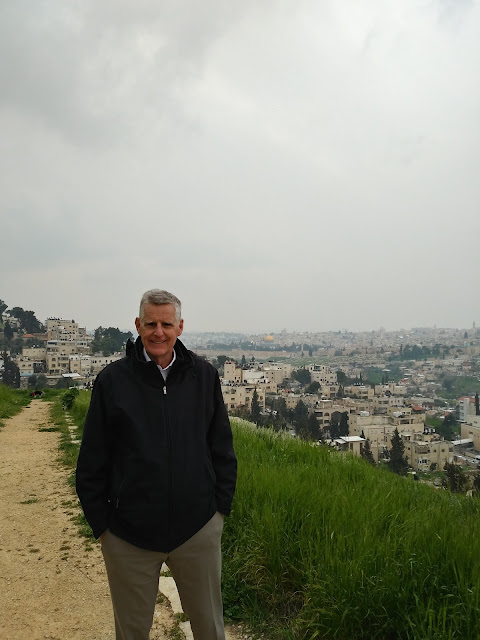St. John the Baptist church in Ein Kerem. Walk down the stairs into a nave which is a rock cave, where John the Baptist was hidden when Herod had all the babies killed in surrounding areas.
Stained glass windows by Chagall in the Hadassah Medical Center
Mamilla Mall in downtown Jerusalem--many American brands are sold here. The Jerusalem Center has Byzantine period mosaics that were found when Mamilla Mall was built.
Damascus Gate in Old City Jerusalem
Sunday, March 9th, we went to the Bethlehem
branch and were the speakers. There was
one Palestinian member there (six were not there), the Branch president, Bro.
Spendlove and his wife, their daughter and grandson who were visiting and
Sarah, a member who goes to Bethlehem to do Primary (but no children were here
this day). Our talks went well—I spoke
about prayer and needing to not just ask, but seek and knock (meaning do
something, work toward what we are asking for).
Lee spoke about how God gives us growth opportunities that are often
painful because God is more interested in our growth than our comfort. The Sacrament was the best part and the
scripture “where two or more are gathered in my name, there I am in the midst of
them” came to mind. It was a simple structure
church, a small gathering, but the Spirit was abundant.
The Rome Temple open house has received a lot of discussion
here as all Twelve apostles and First Presidency are there for the
dedication. Pres. Nelson met with the
Pope, which I think is a first. One of
the service couples, Dennis and Linda Brimhall flew to Rome for the dedication.
Monday, after several meetings, Lee and I walked to the Old
City and walked around. We walked for
about 4 hours, from Old City to downtown Jerusalem near City Hall. We bought strawberries and pickled beets from
a vendor. Lee bought a falafel for 10
shekels (about $3.25) at the place John had taken us to when we were here in
2017. Later that night Lee helped the Hebrew University students get set up for
their practice concert.
Our outing this week was to Ein Kerem, about a 30 minute
drive from Jerusalem and the town where John the Baptist is purported to have
been born. We visited two churches which were built to commemorate John the
Baptist’s birth and one was built on the hill where there was a cave, which is
said to be the one where Elizabeth hid
the Baptist during the slaughter of the innocents by King Herod. This story is told in the Apocrypha. It was the loveliest Spring day we’ve had so
far and walking the grounds of the
churches was really nice. After
a picnic lunch we went to Hadassah Medical Center and saw the famous stained
glass windows by Chagall which are in the Hadassah Medical Center
synagogue.
After the Ein Kerem trip, that night was the Hebrew
University concert. We were not in
charge of it, as they were just using the building, but we ended up ushering
and helping the guests and performers get situated because there was no one
else to do it. There had been a shooting
at Lion’s Gate in the Old City earlier that day, so the security guys were
really vigilant and helpful. Imagine our
horror when all the lights in the auditorium went out just after the concert
ended. Three security men raced in there
(I’m sure worried that there would be a shooting) and eventually it was
discovered that someone had unplugged the main connector—why they had all the
light connected to one connector I will never know, but at least they got the
lights on within about 4 minutes of them going off.
The rest of the week was somewhat slow as we continued to
have to get our phones fixed, dealt with the very cumbersome banking systems
here (Lee is the District Clerk and has been trying to get the finances
straightened out), and didn’t have a lot to do for the concert programs, as
there is a 2 week break between seasons.
But Lee did figure out why my Facetime wasn’t working and got that fixed,
and we had the Earnshaw's over for a game night.
And I figured out how to start a BLOG!!
The students are wonderful and extremely busy with their studies and field trips. This week they went to the Old City Jewish Quarter and to Bethlehem and had midterms! I honestly don't know how they keep up with everything. We have a Come Follow Me student group to our home each Saturday (Sabbath) and I think they really like being in a home and getting homemade American treats!




















































